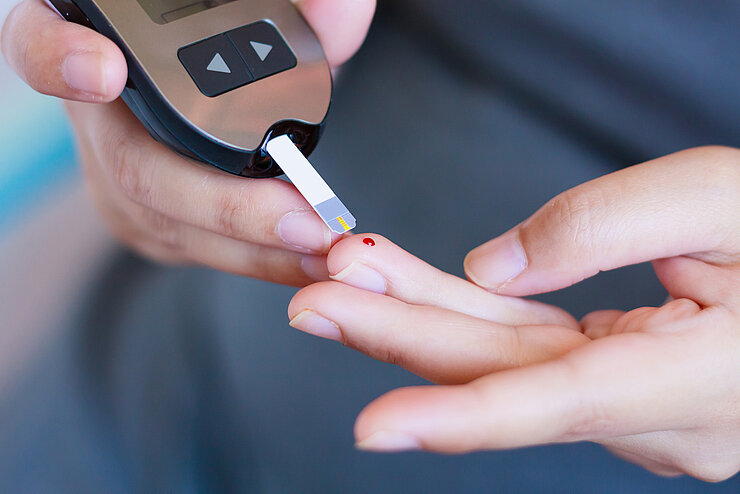Diabetes and infections

According to reports by the German Center for Diabetes Research, approximately six million Germans are currently affected by diabetes – a disease that, sadly, has become all too common. Moreover, experts estimate that the number of people with diabetes will continue to rise.
The etiology of the disease is a rather complex one. This is why scientists distinguish between type 1 diabetes and type 2 diabetes. In both, people's blood sugar levels are elevated above normal. Frequently, diabetics are suffering from hypertension, vascular damage, and poor circulation. The latter paves the way for infections, which represent a serious complication for the diabetic patient.
When eating a high-carbohydrate meal, the body takes up chains of glucose molecules. Digestive enzymes split these chains into individual glucose monomers that then travel through the body via the bloodstream, supplying the cells with essential energy. But in order to get the glucose into the cells, the presence of yet another molecule, insulin, produced in the pancreas, is required. In diabetics, this step in the energy supply is disturbed and, as a consequence, dietary glucose accumulates in the blood.
Type 1 diabetes
People suffering from type 1 diabetes are lacking insulin. This is due to the fact that their immune system erroneously mistakes pancreatic insulin-producing cells for foreign cells and attacks them. The cells under attack are now no longer able to produce insulin and patients have to inject the hormone. However, most diabetics' pancreas continues to produce insulin - at least initially - but the insulin soon ceases to function properly.
Type 2 diabetes
Over time, as a consequence of a largely unhealthy lifestyle, the cells supposed to take up the sugar become insulin-resistant. This causes the pancreas to step up insulin production until it becomes exhausted and shuts down production. Very probably, a genetic predisposition also plays a part. This form of the disease is known as type 2 diabetes.
The “diabetic foot”
Infections play a dual role in diabetes. For one, high blood sugar leads to poor circulation which promotes skin ulceration and infections. Secondly, scientists assume that infections may contribute to the onset of type 1 diabetes. For many diabetics, it is especially infections of the feet, which may spread to the bones, which pose a serious threat. The bone infections are generally refractory to antibiotic treatment and the worst-case scenario to eliminate the infection is amputation of the "diabetic foot".
Typically, diabetic foot infections are polymicrobial and therefore it is very difficult to say which microorganism is really responsible for the infection. This presents a major problem for fast diagnostis and early treatment. HZI scientists are trying to pin-point exactly which bacterial species is responsible for the infection and to uncover the nature of the interaction between them and the body's cells in the diabetic foot.
Increasingly, researchers are beginning to recognize that viral or bacterial infections may positively or negatively affect the etiology of type 1diabetes. Even though this autoimmune disease does have a genetic component, environmental factors, which include infections, certainly play a role. The reason for this is that pathogens influence the various interactions that take place within the immune system. This in turn can potentially intensify or attenuate the immune cells' attacks against the pancreas. These relationships are also being studied at HZI.
(bma)
